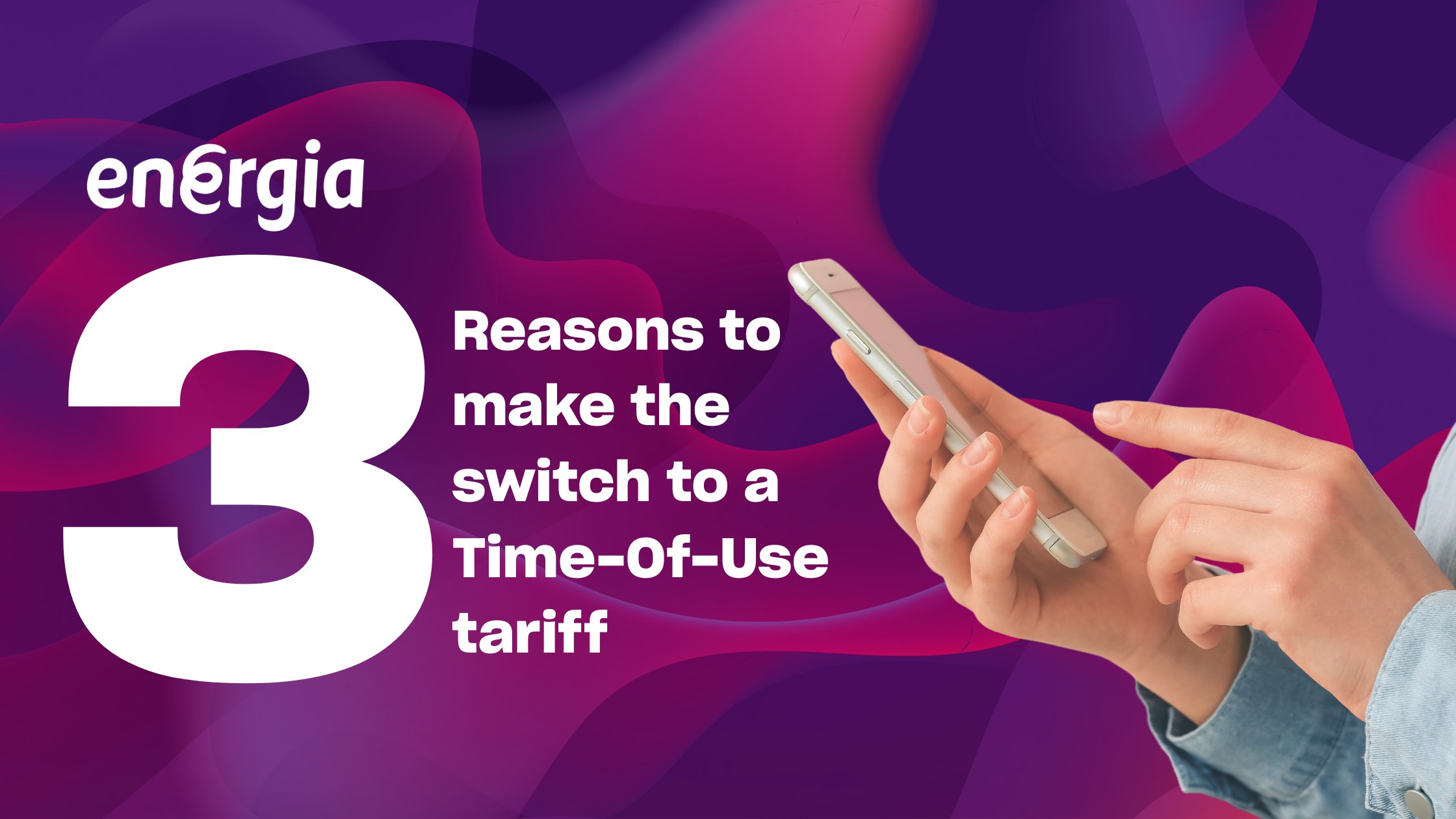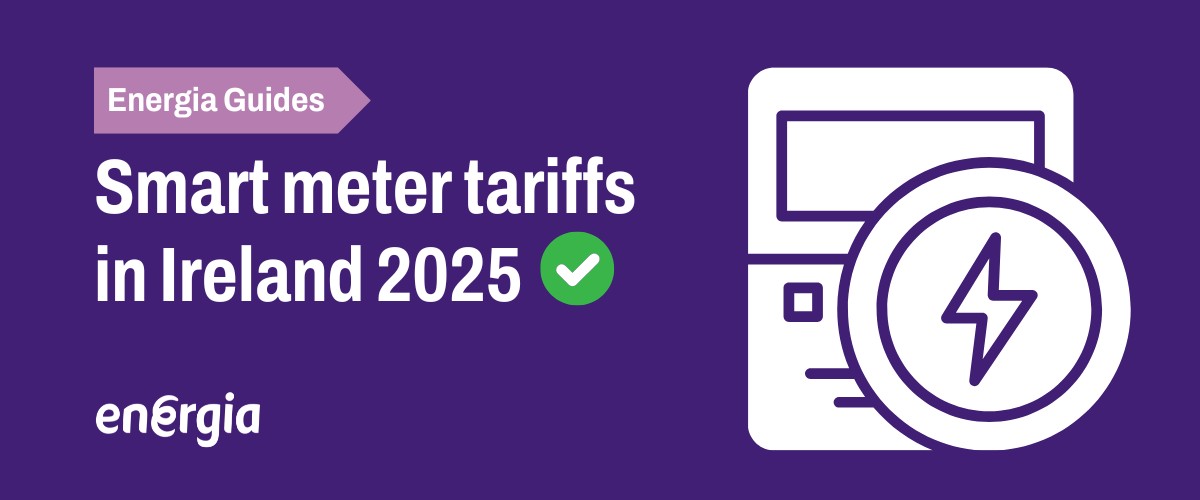Everything you need to know about dynamic electricity tariffs
Dynamic tariffs — a new type of electricity tariff — are launching in Ireland very soon. These smart meter plans will give you access to electricity unit rates that update every 30 minutes, depending on wholesale electricity prices.
Dynamic tariffs encourage households and businesses to use electricity when there’s more renewable energy (like wind or solar) on the grid. This helps reduce the need for fossil fuels and lowers carbon emissions.
By shifting your usage to greener times, you’re not only supporting Ireland’s move to a low-carbon energy system but also helping reduce pressure on the national grid during peak times.
Let’s take a closer look at how dynamic electricity pricing works and whether it would benefit you.
What are dynamic tariffs?
Dynamic electricity tariffs are a type of tariff that factors the wholesale price of electricity into the price you pay for energy. In other words, when electricity is cheaper for us to buy from the grid, it will also be cheaper for you.
Wholesale electricity prices are constantly fluctuating. The price changes every half-hour based on the supply and demand of the electricity market at that time.
Until now, those changes wouldn’t really have impacted you. While long-term trends in the wholesale electricity price eventually result in price changes, daily fluctuations weren’t really seen by customers like you.
That’s about to change. Soon you’ll be able to see these price changes reflected in the amount you pay for electricity. When there is lots of renewable energy available, the wholesale price of electricity will be cheaper. Not only will that benefit your pocket, but you’ll also be contributing towards the reduction of carbon emissions as there will be less reliance on fossil fuels. A dynamic tariff includes a fixed standing charge. But the unit rate changes every 30 minutes based on the wholesale price. The structure of a dynamic tariff is made up of a:
- Standing Charge – fixed amount paid daily which covers the cost of being connected to the electricity network
- Base unit rate – the standard element of your electricity rate. This may be fixed or variable but you’ll know in advance what this is
- Dynamic unit rate – this part of your electricity price will vary every 30 minutes depending on the wholesale price of electricity.
Dynamic tariffs are designed to give you more flexibility over your energy costs, make our electricity grid more efficient and reduce Ireland’s reliance on fossil fuels.
How are dynamic tariffs different to regular smart tariffs?
With smart meter plans, you choose from a range of different time of use tariffs. These give cheaper electricity rates during off-peak times, usually overnight or during the day.
Although these day/night/peak tariffs offer cheaper rates during low-demand periods, the unit rates for different times are typically fixed. Even if the rates are variable, you’ll still know roughly what you’re paying for energy in advance.
While dynamic tariffs reward off-peak energy use with lower prices in the same way, there is less certainty over costs. You’ll only know current wholesale pricing a day in advance of usage.
What are the benefits of dynamic tariffs?
Some of the key advantages of dynamic tariffs are:
Lower energy bills
If you’re able to move your energy usage to low-demand time, you’ll be able to pay less for your electricity and lower your bills.
Environmentally friendly
Dynamic electricity pricing is better for the environment. That’s because it encourages you to use energy at times when demand is low and more renewable energy is available.
More control over energy costs
With a dynamic tariff, you have greater control over how much you spend on electricity. You can take advantage of the cheapest energy prices every day.
What are the risks of dynamic tariffs?
Dynamic electricity pricing is not without its risks. Some potential downsides include:
Price spikes
If wholesale electricity prices spike for any reason, you will be open to the sudden price rise. This wouldn’t be the case if you were paying a set price for energy on a regular tariff.
Uncertainty over bills
With prices changing frequently, predicting your electricity bills in advance may be difficult. This might be problematic for households that like to budget for upcoming expenses.
Regular monitoring needed
To get the best value from a dynamic tariff, you’ll need to track and manage your electricity usage regularly. This could be difficult if you’re already short of time.
Expensive for peak users
Does your household use a lot of electricity at peak times? If so, it might not be practical to shift all that energy usage to times when demand is low. This would put you at risk of buying most of your electricity when wholesale prices are at their highest.
When are dynamic tariffs launching?
Dynamic tariffs are launching in Ireland in Summer 2026. To get a dynamic tariff, you’ll need a smart meter that can track your electricity usage in half-hourly intervals. This is so the smart meter can communicate with the electricity network as frequently as it needs to. Your meter will need to have a CTF (Communications Technically Feasible) score of 4 for you to avail of a dynamic tariff. A CTF score of 4 means your meter has a strong, reliable signal, like having good mobile phone coverage. This is important because dynamic tariffs need accurate, up-to-date readings to work properly.
If you’ve got all those things, you’ll soon be able to move to a dynamic tariff in the same way you’d switch to any other smart meter plan.


.jpg?width=2240&height=1260&ext=.jpg)
